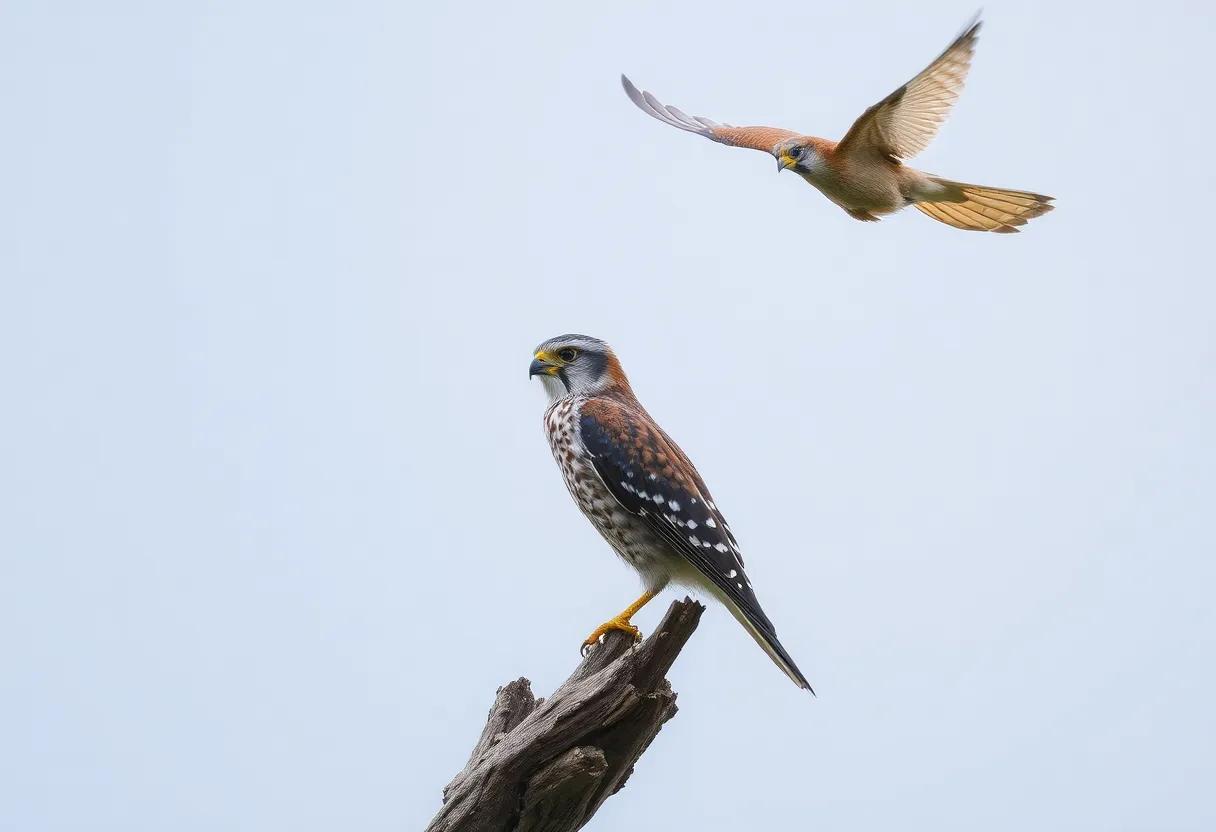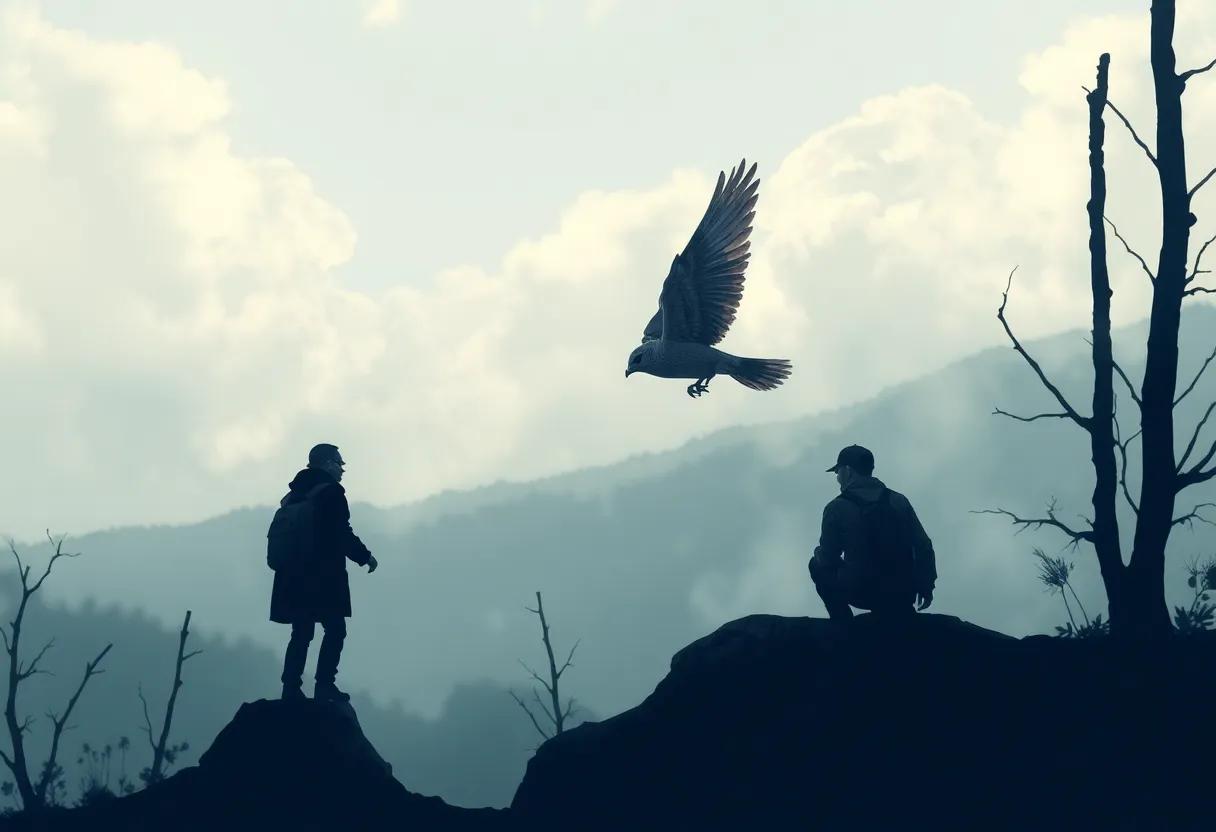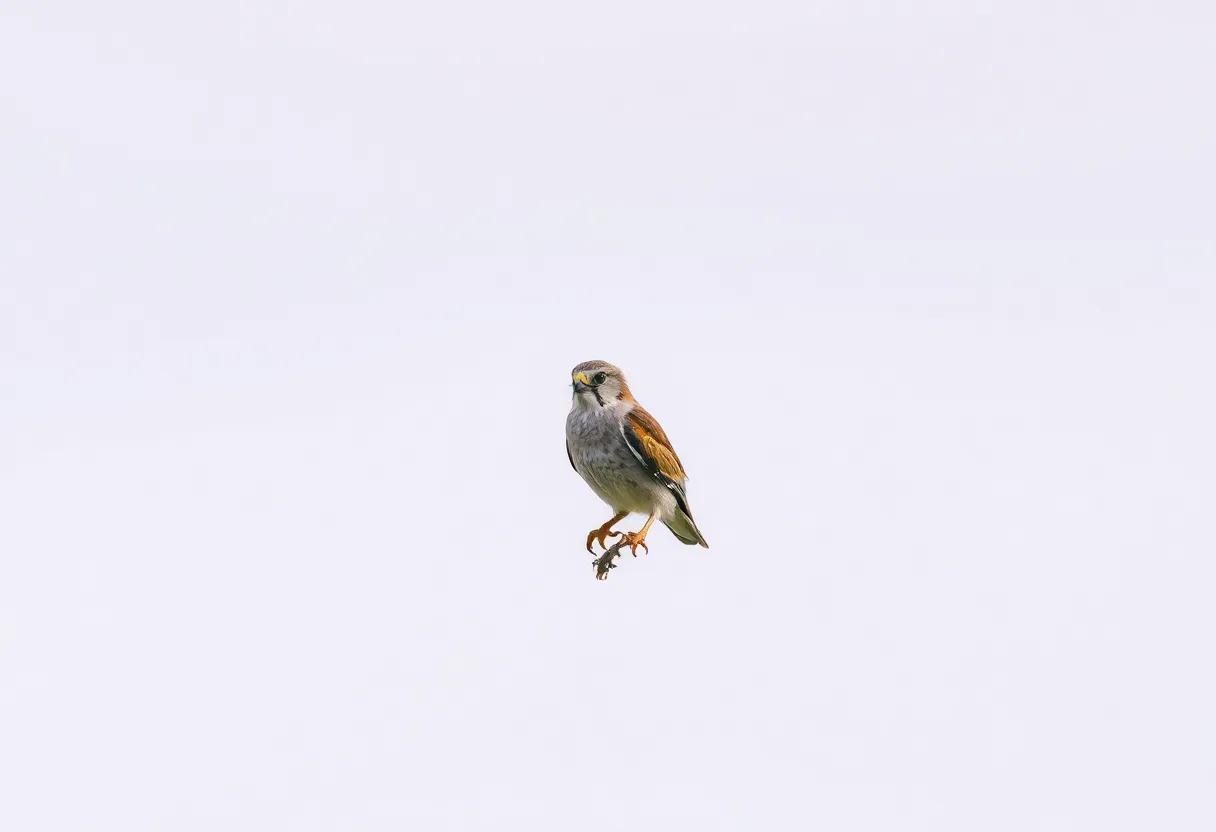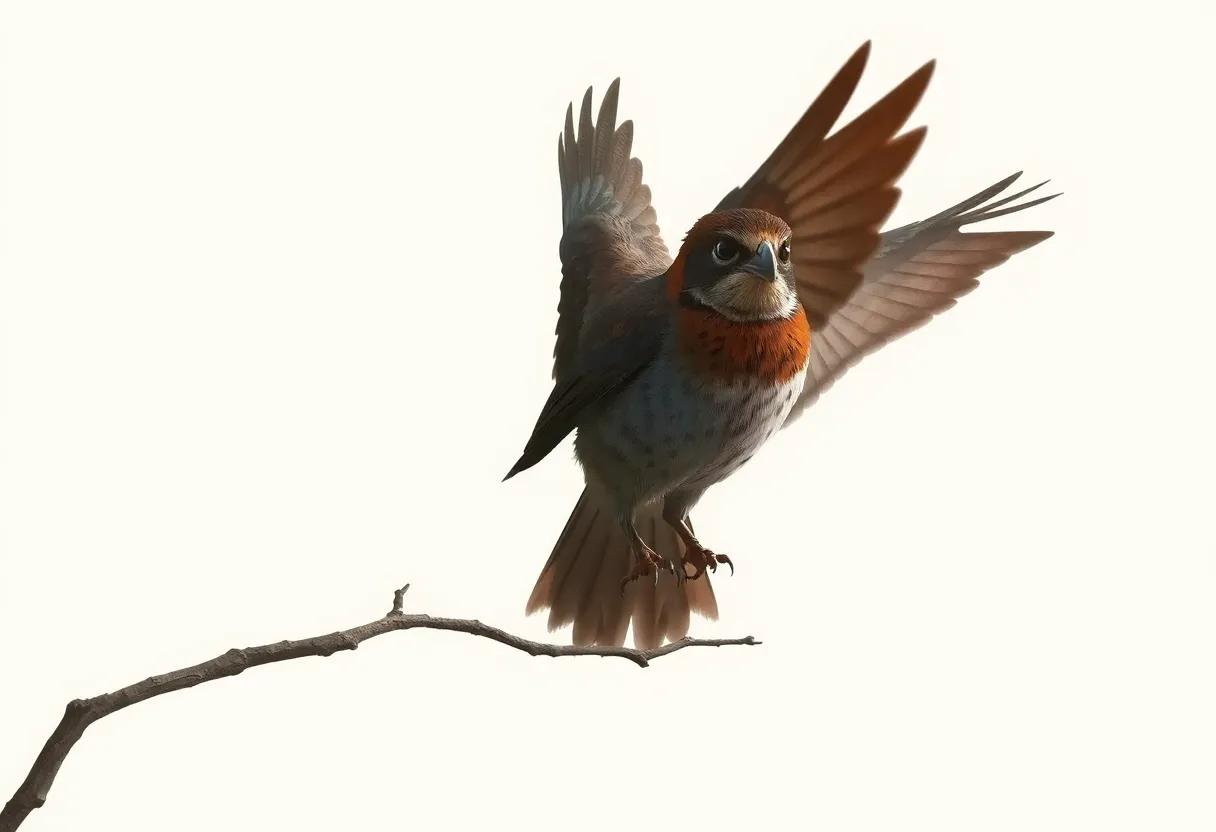In the richly layered tapestry of literature, few works resonate with the profound complexities of human aspiration and the quest for freedom quiet like Barry Hines’ seminal novel, “A Kestrel for a Knave.” Set against the backdrop of post-war Yorkshire, this poignant narrative invites readers into the world of young Billy Casper, a boy navigating the harsh realities of a working-class upbringing while longing for moments of escape and self-discovery. Through the interplay of character, setting, and the symbolic presence of a kestrel, Hines deftly explores the intertwined themes of freedom and growth, capturing the essence of what it means to seek liberation in a world fraught with limitations. In this review, we will delve into the nuanced layers of Hines’ writing, examining how his exploration of these themes resonates not only with the struggles of his time but also with the universal journey of adolescence and the yearning for growth.
The Struggle for Autonomy in a Constrained World of Barry Hines’ narrative
Barry Hines’ narrative encapsulates the profound struggle for autonomy against the backdrop of a world rife with constraints. The protagonist, Billy, is trapped not only by his impoverished surroundings but also by the stifling expectations of society. This tightrope of oppression is skillfully illustrated through the relationships he navigates, revealing how family dynamics and institutional forces can suffocate personal ambition. Billy’s fierce connection with his kestrel serves as a symbol of freedom, representing the innate desire to break free from the shackles of societal limitations. The juxtaposition of his wild spirit against the bleakness of his environment emphasizes a central theme: the fight for self-determination amidst relentless constraint.
As Billy learns to care for the kestrel, he embarks on a transformative journey of self-discovery and growth.This relationship sparks a sense of purpose that has been absent in his life, creating a poignant contrast with the hardships he faces daily.The narrative intricately weaves together moments of despair and hope—
- Connection: The bond between Billy and his bird illustrates his longing for independence.
- Conflict: His aspirations clash with societal expectations, representing an internal struggle.
- Resilience: Despite setbacks,Billy’s determination showcases the human spirit’s capacity for growth.
Ultimately, hines crafts a compelling exploration of what it means to seek autonomy in a world resolute to impose limits. Through Billy’s journey, readers are invited to reflect on their own aspirations and the frequently enough intangible barriers that must be overcome to achieve true freedom.
Birds as Symbols of Freedom: The Role of the Kestrel in the story
The kestrel emerges as a potent emblem of freedom in Barry Hines’ narrative, encapsulating the aspirations and limitations of its protagonist, Billy Casper. Through the relationship between Billy and the bird, readers witness a poignant exploration of personal liberation amidst societal constraints. The kestrel’s ability to soar high and navigate the skies symbolizes Billy’s desire to transcend the harsh realities of his environment. In contrast to his troubled home life and the oppressive structure of the school system, the kestrel represents a world of possibilities. Billy’s interactions with the bird allow him a glimmer of hope, igniting seeds of growth and ambitions that challenge his stagnant existence.
As Billy nurtures and trains the kestrel, freedom and responsibility intertwine, illustrating a crucial aspect of growth.The act of caring for the kestrel demands patience and dedication, mirroring Billy’s own struggles to take control of his life. The juxtaposition of the bird’s natural instincts against Billy’s human limitations emphasizes the tension between longing and reality. In this way, the kestrel becomes not just a mere companion but a catalyst for Billy’s self-discovery, inspiring him to dream beyond his circumstances. This dynamic relationship ultimately underscores the profound impact that freedom—whether it be the flight of a bird or the choice of one’s path—can have on human development.
The Impact of Upbringing on Identity and Personal Growth in the Protagonist
In Barry Hines’ A Kestrel for a Knave, the protagonist, Billy Casper, is profoundly shaped by his upbringing, which encapsulates the struggles of working-class life in 1960s England. Raised in a home characterized by neglect and emotional detachment, Billy’s experiences cultivate a deep sense of alienation. His relationship with his family is marked by lack of support and understanding, which drives him to seek solace in the freedom of nature and the companionship of a kestrel. This bond serves not only as an escape from his harsh reality but also as a catalyst for his personal development. The juxtaposition of his turbulent home life and his aspirations for personal independence highlights how upbringing can create barriers, yet also foster a desire for growth and self-discovery.
The exploration of identity in the narrative is further accentuated by Billy’s interactions with the world around him. School becomes another battleground where his sense of self is challenged; his teachers fail to recognize his potential, further reinforcing his struggles. Yet, it is indeed amidst these challenges that he begins to carve out his distinct identity. through pivotal experiences,such as training the kestrel and engaging with his peers,Billy learns valuable lessons about resilience and self-worth. this growth is emblematic of a universal truth: despite the restrictive forces of his environment, the quest for personal freedom remains a profound driver of change. Ultimately, Billy’s journey underscores the complexity of how one’s upbringing can craft, but not entirely define, one’s identity and path toward self-actualization.
Friendship’s Role in Seeking Escape from Societal Limitations
In the tumultuous world of Barry Hines’ *A Kestrel for a Knave*, the protagonist, Billy Casper, forges a profound connection with his kestrel, bringing a sense of escape from the oppressive environment of his daily life. This relationship serves as a profound metaphor for human connection, demonstrating how bonds formed amidst adversity can provide a refuge from societal constraints. Through his friendship with the bird,Billy experiences feelings of freedom that starkly contrast the limitations imposed on him by family,school,and the harsh realities of his working-class existence. This friendship exemplifies how nurturing a bond, even with a creature seemingly detached from human concerns, can help one break away from life’s mundane and often suffocating expectations.
The themes of camaraderie and companionship not only offer Billy a respite but also cultivate his personal growth.As he navigates the challenges of adolescence, the role of friendship becomes pivotal in shaping his identity and aspirations. Through his interactions with peers, he learns essential lessons about loyalty and trust, which can frequently enough be overshadowed by the bleakness surrounding him. The contrast between the heart-wrenching limitations of his environment and the invigorating experience of friendship underscores a vital truth: connection can illuminate paths to freedom, helping individuals to transcend their limitations. Here are a few friendships and their impacts on Billy:
| Friendship | Impact on Billy |
|---|---|
| Kestrel | offers solace and a sense of purpose |
| Peer Connections | Provides understanding and shared experiences |
| Support from Teachers | Encourages personal growth and exploration |
The Dynamics of class and opportunity as Reflected in the Characters’ Lives
The stark contrast between class and opportunity is epitomized in the lives of Barry Hines’ characters, each shaped by their socioeconomic backgrounds. The protagonist, Billy Casper, represents the struggles of the working class, highlighting the systemic barriers that entrap individuals in a cycle of poverty. Billy’s daily encounters showcase how his environment limits his aspirations, from the dilapidated school he attends to the oppressive home life dominated by a lack of understanding and support. these elements paint a vivid picture of a young boy yearning for freedom, not just from his circumstances but also from the pervasive societal norms that dictate what he can or cannot achieve.
Contrary to Billy’s constrained existence, other characters in the narrative illustrate the disparity in opportunities afforded by different social standings. Key points of contrast include:
- Supportive Figures: Unlike Billy’s antagonistic home life, more privileged characters frequently enough receive encouragement from family and accessible resources.
- Educational Opportunities: While Billy grapples with a dismissive education system, others around him have access to nurturing mentors and extracurricular experiences.
- Social Mobility: the dynamics of class are further accentuated through the depiction of characters whose wealth allows them a notable degree of mobility, both physically and socially.
| Character | Class Background | opportunities |
|---|---|---|
| Billy Casper | Working Class | Lack of Support |
| Mr. Farthing | Middle Class | Access to Resources |
| Other Peers | Privileged Class | encouragement & Opportunities |
Narrative Techniques that Highlight Inner Conflict and Aspiration
In Barry Hines’ A Kestrel for a Knave, the protagonist’s journey is intricately woven with narrative techniques that effectively illuminate his inner turmoil and aspirations. The use of stream-of-consciousness allows readers to delve deep into the psyche of the main character, Billy, as he navigates the harsh realities of his environment and his yearning for freedom. This technique not only highlights his frustrations and desires but also creates a profound connection with the audience. The interplay of dialog and free indirect style adds layers to Billy’s voice, blending his thoughts and spoken words in a way that reflects his internal struggles, making his ambitions tangible despite the limitations imposed by his surroundings.
Moreover, Hines employs symbolism and foreshadowing to emphasize the conflict between freedom and the constraints of society. The kestrel itself serves as a powerful symbol of Billy’s longing for independence and self-expression, representing the wild spirit he strives to nurture amidst oppression. Additionally, the subtle hints at Billy’s fate throughout the narrative foreshadow his struggles and aspirations, shaping a poignant depiction of a young man’s fight against the odds. By intertwining these techniques, Hines crafts a rich tapestry that not only provides insight into the character’s inner battles but also invites readers to reflect on their own journeys of growth and the pursuit of personal liberty.
Emotional Landscapes: How Hines Paints the Turmoil of Youth
In the evocative narrative of Barry Hines’ A Kestrel for a Knave,the author vividly captures the emotional weight of youth,portrayed through the eyes of young Billy Caspar.The struggles he faces reflect a desire for freedom amid the constraints of his environment, mirroring the turbulent journey of adolescence. Through Hines’ intricate storytelling, readers are drawn into Billy’s world where the longing for escape intertwines with the pain of disillusionment. The kestrel, a symbol of both hope and entrapment, becomes a manifestation of Billy’s personal battles, illustrating how the quest for independence often comes with profound emotional turmoil.
Hines masterfully uses the landscape of the Yorkshire environment to echo Billy’s inner conflicts, emphasizing the contrasts between freedom and confinement. This is beautifully represented in Hines’ use of imagery and symbolism, including:
- Nature: Reflects both beauty and harsh reality.
- Birds: Signify freedom yet also vulnerability.
- Socioeconomic Struggles: Highlight societal limitations imposed on youth.
Through these elements, Hines crafts an emotional landscape that resonates deeply with readers, making them empathize with Billy’s plight and his pursuit of growth, even when faced with overwhelming adversity. The narrative serves as a powerful commentary on the complexities of youth, leaving an indelible impact on our understanding of personal struggle and resilience.
The Power of Nature as a Catalyst for Change and Self-Discovery
In Barry Hines’ poignant narrative, the natural world serves as a powerful backdrop, embodying both the beauty and harshness of life. The protagonist, Billy Casper, navigates the biomes of his industrial environment, dreaming of freedom as he finds solace in nature, particularly through his relationship with the kestrel. This avian companion is more then just a bird; it symbolizes Billy’s aspirations and desire for a life unbound by the constraints of his socio-economic circumstances. The stark contrast between the synthetic and organic elements of his surroundings highlights the profound impact that nature can have as a sanctuary and a source of inspiration, driving characters toward self-discovery and transformation.
Throughout the narrative, the interplay between personal growth and the natural environment becomes increasingly evident. As Billy learns to care for his kestrel, he not only discovers his own capabilities but also develops a sense of responsibility and purpose.The journey echoes the following themes:
- Freedom: the kestrel represents a frontier of possibilities, urging Billy to seek a life beyond his current limitations.
- Growth: Each interaction with nature fosters personal evolution, mirroring his internal struggles and triumphs.
- Connection: The bond with the kestrel deepens Billy’s relationship with the world around him, emphasizing the importance of empathy and kinship.
Hines intricately weaves these themes into Billy’s journey,portraying nature as an essential catalyst for change. Through the lens of this young boy’s experiences,readers witness not only a struggle against societal expectations but also an embrace of the transformative power of the natural world,capturing the essence of resilience and the quest for identity.
Themes of Rebellion and Resistance Against Systematic Oppression
In barry Hines’ poignant narrative, the stark realities of life in a working-class Yorkshire village serve as a backdrop for profound themes of rebellion and resistance. The protagonist,Billy casper,embodies the struggle against oppressive forces—both societal and institutional. As he navigates the harsh expectations placed upon him, he finds solace and empowerment in his bond with the kestrel, a symbol of freedom and a stark contrast to the constraining environment of his school and home life. This relationship becomes a catalyst for Billy’s defiance against a system that seeks to stifle his spirit and potential, illustrating that even in the bleakest circumstances, the yearning for liberation can ignite the sparks of rebellion.
The narrative effectively captures the essence of youth grappling with systemic oppression through various layers, including:
- Social Class Struggle: The character of Mr. Gryce represents the authoritative figures that embody the limitations imposed by society, contrasting sharply with Billy’s dreams.
- Educational System Critique: Billy’s lack of connection to his teachers highlights the failures of the educational system to recognize and nurture individual talent and creativity.
- Family Dynamics: The oppressive nature of Billy’s home life further emphasizes his isolation and underscores his need for personal expression and escape.
Through these themes, Hines intricately weaves a narrative that resonates with anyone who has felt the weight of expectation and the desire to break free. Billy’s journey not only seeks personal growth but also mirrors the universal struggle against systems that seek to define and limit us, making ‘A Kestrel for a Knave’ a timeless exploration of resilience in the face of adversity.
The Interplay of Hope and Despair: A Dual Lens on Character Development
In Barry Hines’ poignant narrative, characters navigate the turbulent waters of hope and despair, each emotion revealing crucial facets of their personal growth. For young Billy Casper, the struggle to transcend his grim reality is palpable. His relationship with the kestrel not only symbolizes freedom but serves as a mirror reflecting his own aspirations and disappointments. The visceral experience of training the bird becomes a source of resilience, allowing Billy to momentarily escape from the weight of his circumstances. The contrast between his dreams of soaring with the kestrel and the harsh confines of his existence paints a vivid picture of a young boy caught between conflicting worlds, embodying the duality of human experience in the face of adversity.
Conversely, despair looms as an ever-present foe, erasing the boundaries of hope. Billy’s encounters with authority figures—his teachers and family—often quash his ambitions,leading him to internalize a profound sense of inadequacy. These interactions highlight the systemic failures that stifle social mobility and reinforce the cycle of despair.However, amidst this bleak backdrop, moments of connection and kindness offer glimmers of solace, showcasing that even in the darkest times, hope can flicker to life.through this intricate interplay,Hines crafts a narrative that transcends simple character arcs,instead revealing the complexities of survival and self-discovery in a world laden with both promise and peril.
Recommendations for Engaging with Hines’ Exploration of Youth and freedom
To fully grasp Hines’ profound exploration of youth and freedom in “A Kestrel for a Knave,” consider immersing yourself in the social and emotional context of the characters. Engaging with the text means reflecting on how themes of freedom and growth are intertwined with the struggles faced by the protagonist, Billy. Engage in discussions with peers or through online forums where you can share and challenge perspectives. Focus on the following key aspects:
- Character development: Analyze how Billy’s relationship with his kestrel symbolizes his longing for freedom.
- Social Commentary: Examine how Hines critiques the systemic constraints faced by working-class youth.
- Symbolism and Motifs: Identify recurring symbols and motifs that reinforce the themes of liberation and self-discovery.
Moreover, enhancing your experience can be achieved by connecting the novel’s narratives to contemporary issues of youth empowerment and autonomy. Organize or participate in workshops that reflect on Hines’ portrayal of adolescence amidst challenging socio-economic conditions. Delve into the following elements to enrich your understanding:
| Element | Significance |
|---|---|
| Billy’s Relationships | Highlights dependencies and the struggle for independence. |
| The kestrel | Represents Billy’s yearning for freedom and personal agency. |
| Setting | Reflects the harsh realities that constrain youth aspirations. |
Cultural Context and Its Influence on the themes in Hines’ Work
Barry Hines’ work is deeply intertwined with the cultural landscape of 1960s and 1970s England, particularly in the context of working-class struggles. The social backdrop of his novel “A Kestrel for a Knave” is one marked by economic hardship and limited opportunities, especially in the industrial towns of Yorkshire. Through the protagonist,Billy Casper,Hines encapsulates the sense of entrapment experienced by many young individuals during this time. Themes of freedom and growth are prevalent as Billy seeks solace and escape in his relationship with the kestrel, a symbol of both his aspirations and the restrictions imposed upon him by society.This relationship highlights the stark contrast between the wildness of nature and the suffocating environment of the local school and familial expectations.
The cultural context also influences the portrayal of masculinity and personal identity in Hines’ narrative. Billy’s struggles resonate with the frustrations of adolescence, compounded by societal norms that dictate how a young man shoudl behave. Central to this exploration is the theme of education, portrayed not just in a conventional sense, but as a transformative journey. The novel suggests that true learning often occurs outside the classroom, through life experiences and personal relationships. As the following table illustrates, the distinct elements of Billy’s journey provide a deeper understanding of his quest for identity:
| Element of Journey | Symbolism | Impact on Billy |
|---|---|---|
| relationship with the Kestrel | Symbol of freedom | Encourages self-discovery |
| Family Dynamics | Source of conflict | Contributes to isolation |
| Educational Environment | Portrayal of oppression | Spurs rebellion and growth |
barry Hines: A Literary Voice Capturing the Essence of Struggles in Everyday Life
Barry Hines possesses a unique ability to weave complex emotions and realities into the fabric of everyday life, creating narrative landscapes that resonate deeply with readers.In his novel ‘A Kestrel for a Knave’, Hines encapsulates the often-overlooked themes of freedom and personal growth through the experiences of his protagonist, Billy casper. His struggles against the confines of his environment—a stark portrayal of working-class life in Northern England—serve as a backdrop against which the universal pursuit of liberation from societal limitations unfolds. The symbolic relationship between Billy and his kestrel, Kes, further amplifies this quest for freedom, reflecting not just a desire for escape, but also a yearning for understanding and connection in a world that frequently feels oppressive.
As readers delve deeper into the narrative,they are drawn into the intricacies of billy’s character development. His journey is marked by moments of revelation and resilience, highlighting the transformative power of nurturing one’s passions amid adversity. Hines artfully contrasts the bleak realities of Billy’s surroundings with the uplifting experiences of caring for Kes, illustrating how small acts of love and commitment can inspire growth. Within this poignant tale, themes emerge that resonate beyond the confines of the text, inviting contemplation on the essence of freedom, the inherent struggle for aspiration, and the potential for personal evolution against all odds.
understanding the Legacy of Hines as a Champion of the Underrepresented
Barry Hines emerged as a voice for the marginalized, intricately weaving themes of struggle and resilience through his characters. His seminal work, A Kestrel for a knave, showcases the life of Billy Casper, a boy from a neglected background who finds solace and purpose through his relationship with a kestrel. Through Billy’s journey,Hines presents a poignant narrative that challenges societal norms and exposes the harsh realities faced by the underrepresented. His ability to capture the essence of working-class life in Yorkshire transcends mere storytelling; it critiques the systemic barriers that inhibit freedom and self-actualization for those on the fringes of society.
furthermore, Hines illustrates the profound impact of mentorship and hope, even in bleak circumstances.the concept of freedom is not merely physical in his narrative but is deeply rooted in the emotional and psychological realms. Readers encounter the struggle for identity and autonomy as Billy learns to navigate a world that often dismisses him. Hines celebrates the resilience of the human spirit, urging us to recognize and support those who are often overlooked. Through a vivid portrayal of connection—between boy and bird, as well as teacher and student—Hines affirms that growth is absolutely possible when we dare to dream despite our limitations.
The Way Forward
Barry Hines’ “A Kestrel for a Knave” serves as a poignant tapestry woven from the threads of freedom and personal growth. Through the eyes of young Billy Casper, we witness not only the struggles of adolescence but also the profound yearning for autonomy and identity that resonates with readers of all ages. Hines deftly captures the harsh realities of life in a working-class setting, juxtaposed with the fragile beauty of nature and the delicate bond between boy and bird. As the story unfolds, we are reminded that true liberation frequently enough comes not from external circumstances but from within—a lesson that lingers long after the final page is turned. Hines invites us to reflect on our own journeys toward freedom,making “A Kestrel for a Knave” a timeless exploration of the human spirit’s resilience and the growth that emerges from our most challenging experiences. Whether you are revisiting this classic or discovering it for the first time, the themes of hope and aspiration in Hines’ narrative promise to leave an indelible mark on your heart and mind.
















